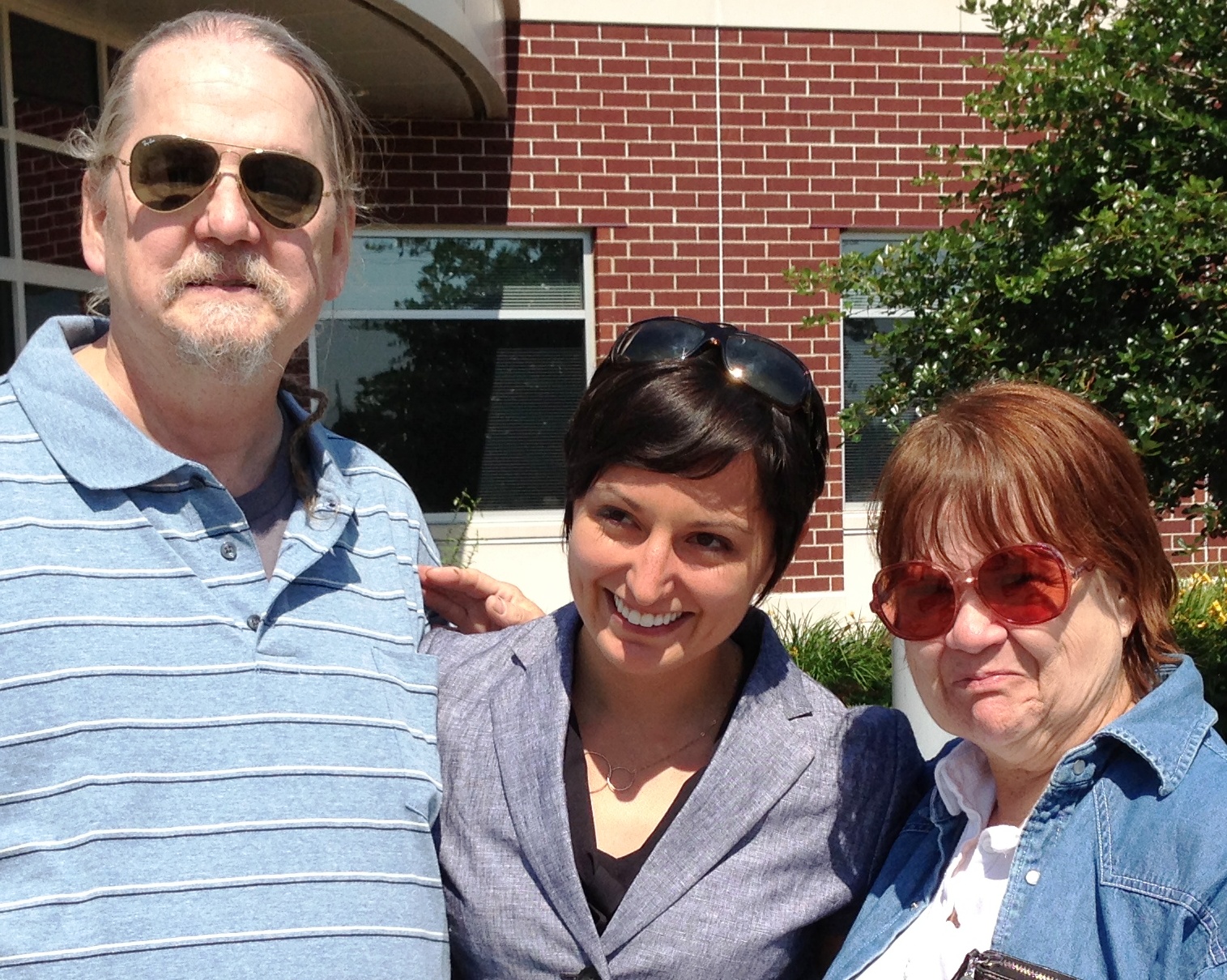 Photo of Frey, attorney Tricia Bushnell and Frey's sister courtesy of Wisconsin Innocence Project On February 9, 1991, a 21-year-old woman, a student at the University of Wisconsin-Oshkosh awoke in her apartment in Oshkosh to find a man with a knife standing in her bedroom doorway. The man raped her in her bed and fled.
The woman called a friend and reported the attack. The friend came to the apartment and called police. The victim identified her landlord as her attacker.
Two days later, police assembled a photographic lineup which included her landlord, but the victim was unable to make an identification. A live lineup was then conducted that included a man that she knew from the area, but again she was unable to identify anyone as her attacker.
On March 27, 1991, police presented the victim with another photographic lineup which included 31-year-old Joseph Frey, a resident of Green Bay, Wisconsin. Frey was included in the lineup because he had been charged with two rapes in Green Bay—about 50 miles from Oshkosh—that occurred on January 31, 1991 and on February 19, 1991. Both of those victims had identified Frey as their attacker, in part because they knew him prior to the attacks. The victim said that a side view of Frey looked similar to her assailant, but from the front, Frey looked too old.
On April 9, the victim viewed a live lineup that included Frey. The victim said she was undecided between Frey and another person in the lineup and asked both of them to re-read a list of prepared statements that had been uttered by her attacker. The victim said she could not positively identify her attacker, but she finally settled on Frey.
Frey was charged with first-degree sexual assault, burglary and false imprisonment.
Prior to the trial, Frey sought to dismiss the charges against him, alleging the state had destroyed evidence that he said could prove his innocence. Pubic hair taken from the victim at the hospital after the attack had been destroyed without being compared to Frey’s hair. Also destroyed prior to trial were pillow cases, the clothing the victim was wearing at the time of the rape and the sexual assault evidence kit. All that remained were the sheets. The destruction of evidence was ruled inadvertent and the motion to dismiss was denied.
By the time Frey went on trial before a jury in Winnebago County Circuit Court in January 1994, he had pled no-contest to the January 1991 rape in Green Bay and had been convicted by a jury of the February 1991 rape. (The February rape conviction was later overturned on appeal on legal grounds, but his convictions for burglary and false imprisonment in that case remained intact). He was sentenced to 22 years in prison in those two cases and completed that sentence in 2005.
At trial, the victim identified Frey as her attacker. DNA tests performed on the semen-stained sheets—the only physical evidence that remained in the case—excluded Frey. The prosecution contended the semen stain was left by a friend of the victim on a prior occasion.
A jail inmate also testified for the prosecution that after Frey was arrested, he admitted to all three rapes during a conversation in jail.
The prosecution argued that all three rapes fit a pattern—that the victims were attacked as they slept, none of them was tied up, and the attacker brandished a knife and did not wear gloves. The victims in the two other assaults both testified against Frey and described how they were raped.
The defense sought to cast doubt by noting the long distance between Oshkosh and Green Bay, and pointing out that Frey knew both of his victims in Green Bay before the assaults. The defense also noted that the Green Bay victims were choked and the Oshkosh victim was not, the Green Bay assaults lasted one to two hours while the Oshkosh rape lasted less than an hour, and in the Green Bay assaults, the attacker demanded money, while nothing was taken from the apartment in Oshkosh.
On February 4, 1994, the jury convicted Frey of sexual assault, burglary with a dangerous weapon and false imprisonment. He was sentenced to 102 years in prison.
In 2011, the Wisconsin Innocence Project began investigating Frey’s case. On August 9, 2011, a law student with the Project telephoned the chief deputy clerk of Winnebago County and asked if any of the evidence—specifically the semen-stained sheets—still existed. The clerk said she would check, but believed the evidence was probably destroyed.
The following day, the clerk called the law student back to report that the sheets had been preserved.
A motion was filed seeking DNA testing to develop a profile suitable for submission to the Wisconsin State Crime DNA database.
In 2012, the testing developed a DNA profile that was linked in the database to James Crawford, who had been convicted in 1991 of sexually assaulting girls, ages 12 and 13. Crawford had become ill in prison and was released to a nursing home, where he died in 2008.
Based on the DNA match to Crawford, the Wisconsin Innocence Project lawyers asked that Frey’s conviction be vacated and the case dismissed. On May 22, 2013, the prosecution joined in the Innocence Project motion and the conviction was set aside. On July 12, the prosecution dismissed the case and Frey was released. In 2014, the Wisconsin Claims Board awarded him the maximum compensation of $25,000.
– Maurice Possley |